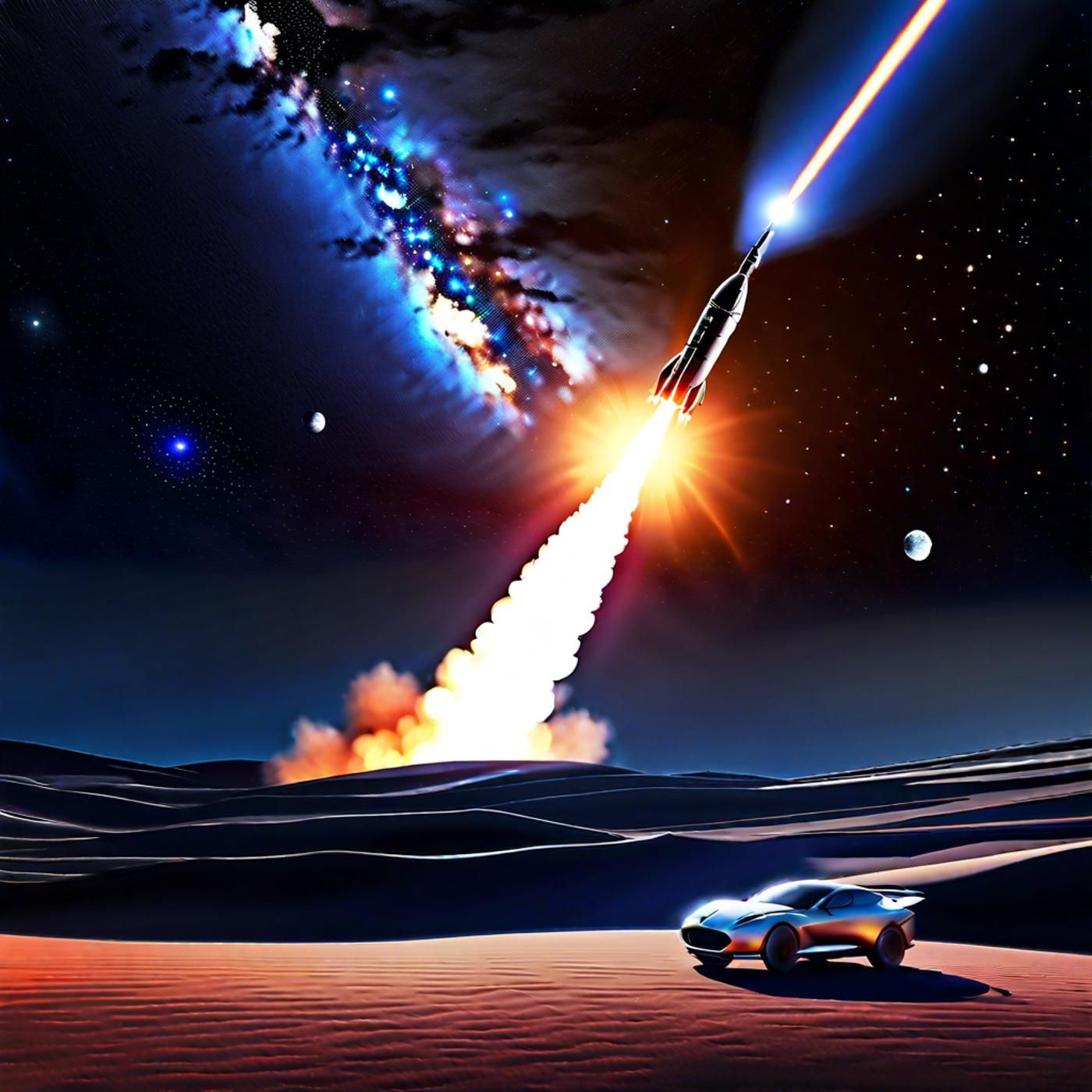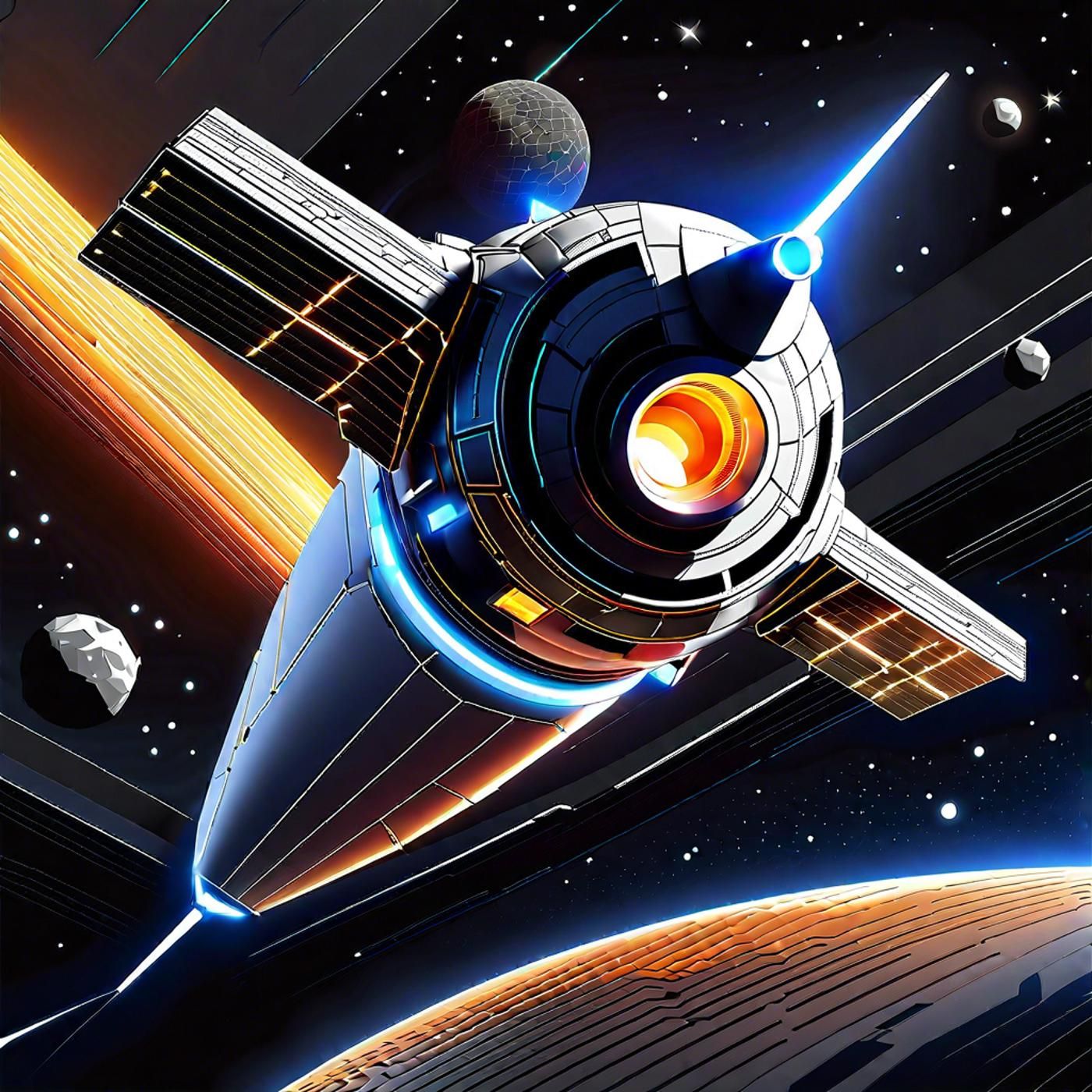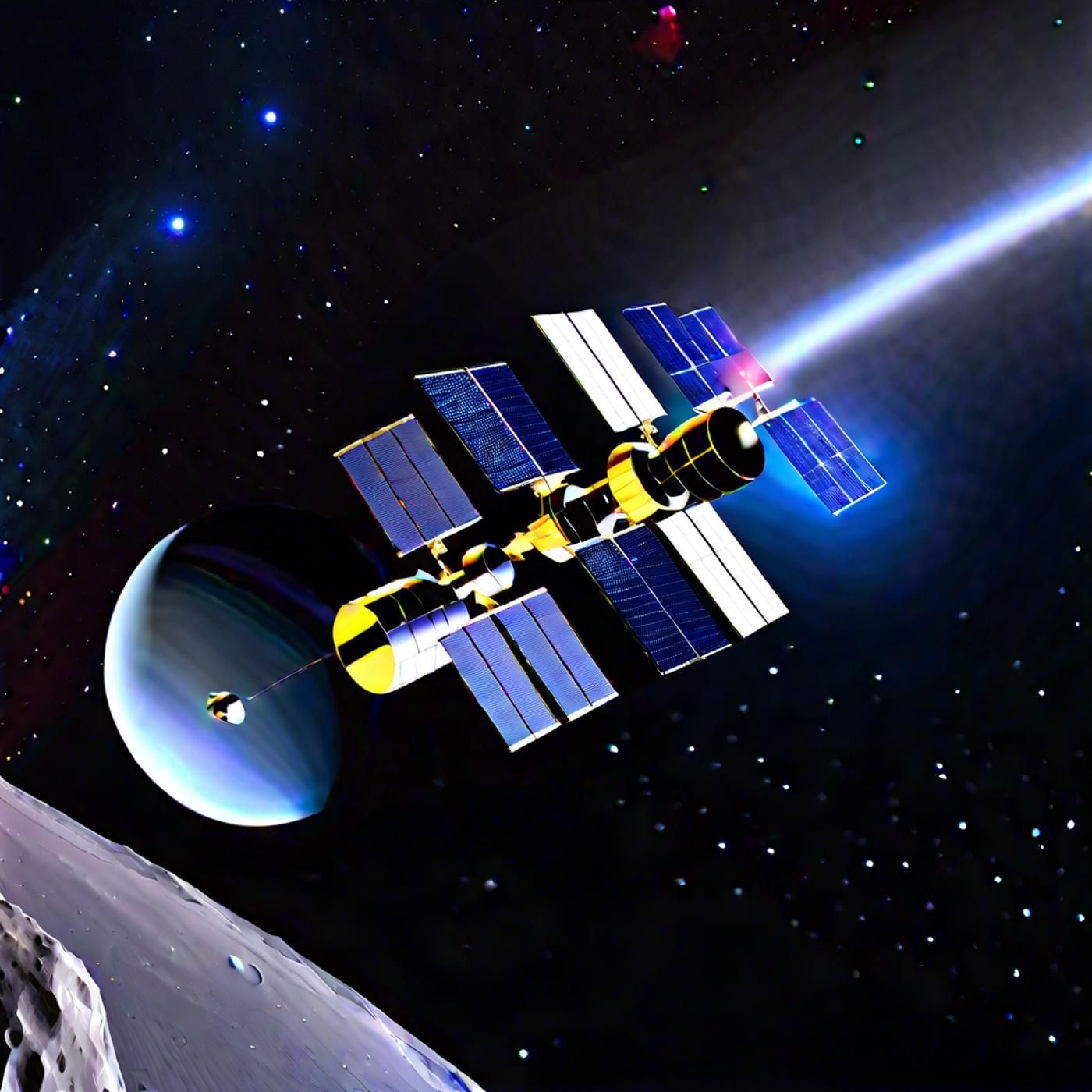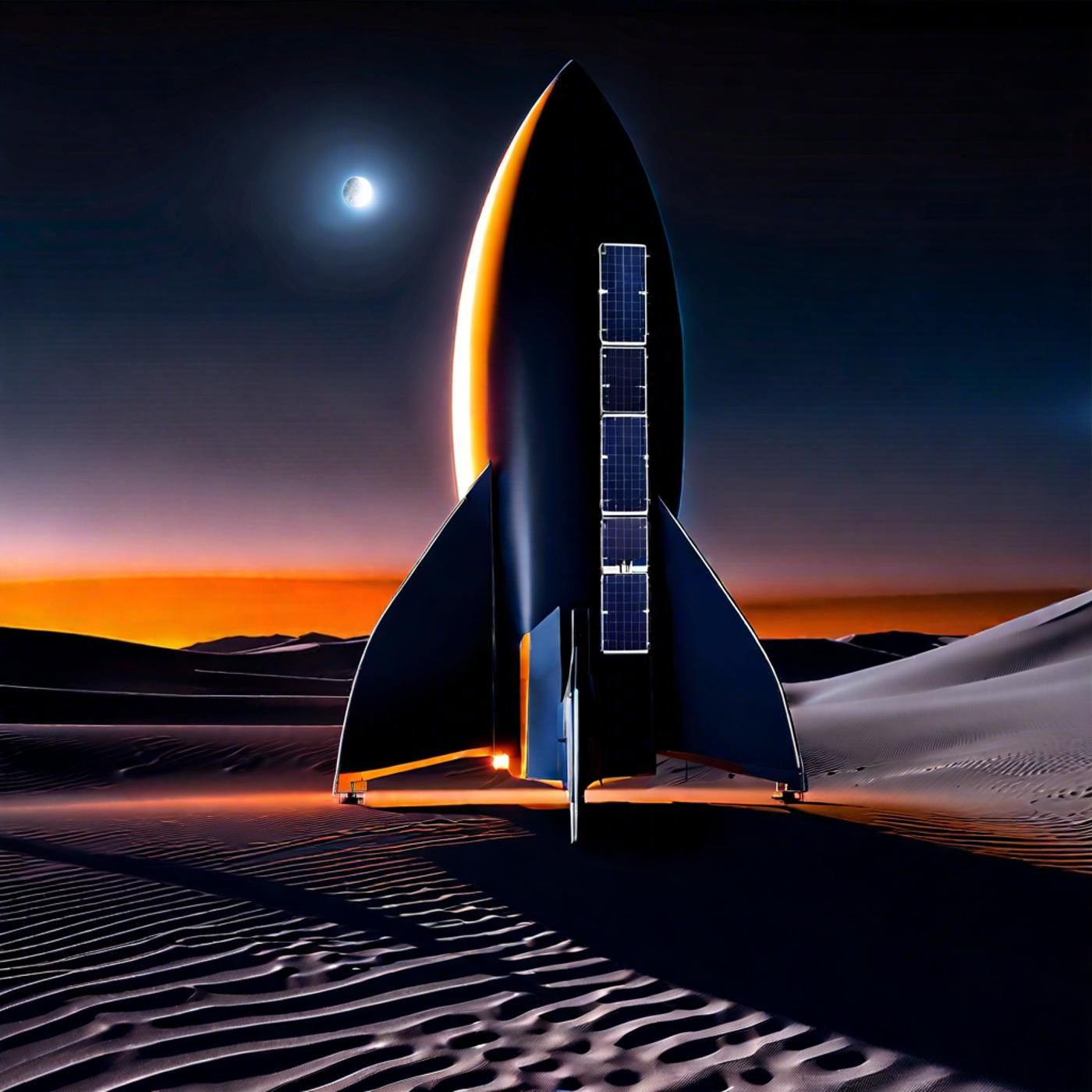S03E89: Gateway to the Moon & Odyssey's 100,000th Orbit

Welcome to Astronomy Daily, the podcast that brings you the latest news in space and astronomy. I'm your host, Steve Dunkley. Today, we have an exciting lineup of stories that will take you from the depths of Mars to the future of lunar exploration....
Welcome to Astronomy Daily, the podcast that brings you the latest news in space and astronomy. I'm your host, Steve Dunkley. Today, we have an exciting lineup of stories that will take you from the depths of Mars to the future of lunar exploration. We'll discuss NASA's milestone with the Odyssey spacecraft, the ambitious Gateway lunar orbiting space station, and the Australian-Indian space collaboration. We'll also cover a dramatic Chinese rocket mishap and SpaceX's new contract to deorbit the International Space Station. Let's dive into the cosmos.
00:00 Steve Dunkley with Astronomy Daily for the 1 July, 2024
02:13 NASA and its partners are launching Gateway lunar orbiting space Station in 2028
11:49 Australia and India have signed an agreement to collaborate on commercial space projects
14:00 An unintended launch in China on Sunday resulted in a massive fireball
18:55 NASA says it intends to operate the space station through 2030
25:58 Steve Dunkley: Thank you for listening to Astronomy Daily
Thank you for tuning into Astronomy Daily. I'm Steve Dunkley, and I hope you enjoyed today's journey through some of the most exciting news and discoveries in astronomy and space exploration. Remember to visit our website at astronomydaily.io to sign up for our free daily newsletter and stay updated with the latest space news. You can also connect with us on social media at AstroDailyPod on X and our Facebook page, Astronomy Daily. We love bringing the wonders of the universe to your ears, and we appreciate your support and curiosity. Stay curious, keep exploring, and always look up. Until next time, take care and happy stargazing.
www.bitesz.com
Become a supporter of this podcast: https://www.spreaker.com/podcast/astronomy-daily-the-podcast--5648921/support.
Steve Dunkley with Astronomy Daily for the 1 July, 2024
Steve Dunkley: Hello again. It's Steve with you for another episode of Astronomy Daily. It's the 1 July, 2024, with your host, Steve Dunkley. Well, can you believe it? It's the 1 July, right in the middle of the year. Well, almost. And it's, going by so very quickly. That's a time thing for all of you time travellers out there. And today we'd like to welcome back Hallie, who's got her voice back. Oh, boy, that's good news. Hey, what's going on, Hallie?
Hallie: Well, today I'm talking about asteroids. More of your favorite subjects.
Steve Dunkley: I like asteroids.
Hallie: You're a rock and roll kinda guy, aren't you?
Steve Dunkley: Oh, true. I mean, retired, but true.
Hallie: Don't give me that. I'll post photos of your guitar and amplifier collection.
Steve Dunkley: Oh, you'd do that, too, wouldn't you?
Hallie: The proof is in the lack of space in the lounge room.
Steve Dunkley: Not that you need any space, but okay, okay, what else have you got for us?
Hallie: Besides all the stratocaster and marshals blocking the studio door, we've received a celebratory announcement that another of NASA's little probes has hit a milestone.
Steve Dunkley: Oh, right. That'd be, the odyssey orbits story.
Hallie: That's the one.
Steve Dunkley: Hey, Hallie, I wonder if anyone out there can guess how many orbits that little bug has made around Mars already.
Hallie: Well, we will find out in a minute. And lastly, I'll tell you about NASA's amazing plans for a lunar orbiting space station.
Steve Dunkley: Oh, wow, that sounds really wild. Very major, Tom.
Hallie: I knew you were going to say that.
Steve Dunkley: Oh, you did not.
Hallie: So, what have you got?
Steve Dunkley: Okay, I've got a story about something close to home. My home. An, australian indian joint mission. That sounds pretty exciting. That's from the australian space Agency. Or as we like to call it, down under up there. Or dude for short.
Hallie: I don't think so.
Steve Dunkley: Yeah, you don't get a vote, Hallie.
Hallie: Really?
Steve Dunkley: Really. Oh, and there's also an unfortunate tale about a chinese mishap. That's a launch that went wrong, and we'll have a brief look at that one. And the big story released this week, perhaps to throw smoke over the Boeing Starliner, is SpaceX's new contract to destroy the ISS.
Hallie: Wow. Somebody get Elon a Darth Vader mask already.
Steve Dunkley: Yeah, I know it sounds like that, doesn't it? So, are we ready, Heli?
Hallie: I'm ready, Jim.
Steve Dunkley: Huh?
NASA and its partners are launching Gateway lunar orbiting space Station in 2028
Let's go.
Hallie: NASA and its partners are launching Gateway lunar orbiting space Station. By 2028, this station will serve as a hub for deep space exploration, featuring advanced modules for power, habitation and science. It will support the Artemis missions with its sophisticated systems including the power and propulsion element, and contributions from international agencies like ESA and JAXA. NASA, in collaboration with international partners, will explore the scientific mysteries of deep space with gateway, humanitys first space station to orbit the moon. Starting with the Artemis four mission in 2028, the international teams of astronauts living, conducting science and preparing for missions to the lunar South Pole region on gateway will be the first humans to make their home in deep space. The gateway station will include many different elements, power and propulsion element that will make gateway the most powerful solar electric spacecraft ever flown. The module will use the sun's energy to power the space station's subsystems and ionize xenon gas to produce the thrust that will maintain gateway's unique polar orbit around the moon. Halo habitation and logistics outpost Gateways Command and control nexus provides communications between Earth and the lunar surface with with the lunar link system provided by ESA. European Space Agency Halo will house life support systems including exercise equipment and science payload banks. Lunar IHAB provided by ESA with hardware contributions from JAXA Japan Aerospace Exploration Agency will host environmental control and life support systems, sleeping quarters and a galley among other features. Lunarview provided by ESA will have refueling capabilities for the power and propulsion element, cargo storage and large windows crew and science airlock provided by the Mohammed bin Rashid Space center of the United Arab Emirates for crew and hardware transfer from gateways interior to the vacuum of space. Canadarm Three advanced external robotic system provided by CSa Canadian Space Agency deep space logistics spacecraft that will transport cargo to gateway to support Artemis missions. Initial gateway science payloads will study solar and cosmic radiation, a little understood phenomenon that is a chief concern for people and hardware traveling through deep space, including Mars. The payloads visible in this video are ERSA european radiation sensors array provided by ESA attached to the power and propulsion element and the nasal ed Hermes Heliophysics Environmental and Radiation Measurement experiment suite is attached to Halo. A third radiation science payload internal dosimeter array provided by ESA and JAXA will be inside of Halo. Gateway is part of the Artemis architecture to return humans to the lunar surface for scientific discovery and chart a path for human exploration further into the solar system, such as to Mars and beyond.
Steve Dunkley: You're listening to astronomy daily, the podcast.
Hallie: With your host, Steve Dudley Bermuda NASA's Odyssey spacecraft, the longest running mission at Mars, circled the red planet for the 100,000th time. Today, it was revealed. To celebrate the milestone, the space agency released an intricate panorama of Olympus Mons, the tallest volcano in the solar system. Odyssey captured the view in March. The volcano's base sprawls 373 miles, or 600 km, near the martian equator while it soars 17 miles, or 27 km, into the planet's thin air. Earlier this month, astronomers discovered ephemeral morning frost coating the volcano's top for a few hours every day, offering fresh insights into how ice from the poles circulates throughout the parched world. In Odyssey's latest image of the volcano, the bluish white band seen grazing Olympus Mons shows the amount of dust floating in the martian air when the image was taken, according to NASA. The thin coat of purple just above likely hints at a mixture of atmospheric dust with bluish water ice clouds. The blue green layer at the top edge of the world marks where water ice clouds reach up about 30 miles, or 48 km, into the martian sky, scientists say. To capture the latest panorama, scientists commanded Odyssey to slowly rotate such that its camera pointed toward the martian horizon, capturing views similar to the kind International Space Station dwellers take of Earth. Normally, we see Olympus mons in narrow strips from above, but by turning the spacecraft toward the horizon, we can see in a single image how large it looms over the landscape, Geoffrey Plot, who is Odyssey's project scientist at the Jet Propulsion laboratory JPL in California, said in the recent news release. Not only is the image spectacular, it also provides us with unique science data. By snapping similar images at different times during the year, scientists can study how the martian atmosphere changes over the planet's four seasons, which last from four to seven months each yesterday. Astronomers and space lovers around the world are collectively marveling at our mercurial presence in the universe, particularly as we drift the cosmos amid large asteroids like the one that supposedly wiped out the dinosaurs 66 million years ago. June 30 marks Asteroid Day, a holiday observed annually to reflect on the prospect of a planet destroying space rock striking Earth and what scientists are doing to mitigate that risk. The day is observed on the anniversary of the 1908 Tunguska, event in Russia, when a space rock about half the size of a football field broke up in the air over a remote forest in Siberia, the biggest asteroid strike ever witnessed on Earth. With a flash brighter than the sun, followed by a thunder like noise, the fireball killed herds of reindeer, knocked people who were over 40 miles away, or 64 km from the impact, off their porches, and leveled about 80 million trees. The impact dumped so much dust in the air that sunsets were fiery red for days, and people who lived as far away as Asia could read newspapers outdoors until midnight. More recently, in February 2013, a 20 meters, 66 foot space rock struck Earth near Chelyabinsk city in Russia, injuring about 1500 people and shattering over 3000 windows in apartments and commercial buildings. The shockwave generated by the impact was so strong it circled our planet twice, scientists say. Although such devastating space rocks land more often in oceans than they do on land, the 2013 asteroid strike just a decade ago now reminded us that these things do happen, Nick Moskovitz of the Lowell Observatory in Arizona said in an interview. Asteroids have this strange duality to them in that they probably delivered the ingredients for life to the Earth, but at the same time, the wrong impact in the right place could lead to significant damage for whoever may be around Asteroid Day is a global awareness campaign spearheaded by the Asteroid foundation in Luxembourg, and it has been an official day in the United nations calendar since December of 2016. In previous years, the day has been celebrated by dozens of local events in institutions around the world, with talks centering around asteroid science that were topical that year. Last year, for instance, many events focused on NASA's wildly successful dart mission, which smashed a refrigerator sized spacecraft into an asteroid named Dimorphos and nudged the space rock off its orbit by 33 minutes, very likely changing the objects shape as well. Dart was humanitys first planetary defense test and proved scientists had the technology necessary to defend Earth if a similar space rock were to ever be on a collision course with our planet. Last year, Asteroid day was very much like Dartfest, said Moskovitz. Its a fun day and thats all the rock I have for you. Favorite human its your turn to roll.
Steve Dunkley: Astronomy daily with Steve and Hallie. Space Space science and astronomy thank you for joining us for this Monday edition of Astronomy Daily, where we offer just a few stories from the now famous astronomy daily newsletter, which you can receive in your email every day, just like Hallie and I do. And to do that, just visit our URL astronomydaily IO and place your email address in the slot provided. Just like that you'll be receiving all the latest news about science, space science and astronomy from around the world as it's happening. And not only that, you can interact with us by visiting AstroDailyPod DailyPod on X or at our new Facebook page, which is of course astronomy daily on Facebook. See you there.
Australia and India have signed an agreement to collaborate on commercial space projects
Earlier this year, the australian government announced funding for three collaborative space projects, including 8.5 million for space maitre. The announced projects were part of the Australian Space agencys $18 million International Space investment, or India ISI projects program to strengthen the space economy for two partner nations. Head of the australian space agency Enrico Palermo said the agreement is an important step towards enhancing Australia's space heritage and strengthening the nation's relationship with India. This formal agreement and mission will leverage our, country's respective capabilities and unique strengths to make space activities more sustainable. Like India, Australia's commercial space sector is rapidly growing and we are producing innovative space technologies that benefit life on earth. The mission will inspire future explorers and further enhance international cooperation in this critical domain, he said. The space matri mission involves several australian and indian partner companies collaborating with space Machines company, including Gigantra, Ananth Technologies, the University of Adelaide, the University of Sydney, the University of Technology Sydney, Leolabs, Advanced Navigation and the Australian Strategic Policy Institute. The space Matri mission and our collaboration with Ensil represents a significant leap forward for Australia's space industry. By combining our innovative spacecraft capabilities with India's proven launch expertise, we are not only strengthening the ties between our nation's space sectors, but also demonstrating our shared commitment to sustainable space operations, said Rajat Kulstreshi, CEO and co founder of space Machines company. The space sector is the fastest growing in the world and is expected to grow by 47.3 billion by 2032, and we continue to strengthen collaboration between our respective space industries across mutual priority areas.
An unintended launch in China on Sunday resulted in a massive fireball
You're listening to astrology daily, the podcast with your host Steve Dudley and I, don't think I'd want to be around for the fallout after this one. It was meant to be a routine static firing of a rocket attached to a test stand on the ground, but instead the tianlong three first stage booster broke free and blasted off. On Sunday, an unintended launch in China's Henan province led to a flight of roughly 1 minute that ended in a very large explosion in the nearby hills about a mile from the test stand. According to witnesses, footage of the catastrophic test result was captured and uploaded to chinese social media, which I, find fascinating. The rocket stage can be, seen leaving the ground and climbing into the air under its own power for about 30 seconds before flipping over on its side and beginning to freefall back to the surface. Back to the ground. After about a minute into the video, a very loud explosion is heard, followed by a massive fireball on a nearby hillside. The accident was captured from different angles and nearby settlements. a statement from chinese commercial space company Space Pioneer, which conducted a statement from chinese commercial space company Space Pioneer, which conducted the test, said that an investigation determined that there had been no, casualties, thank goodness from the accident, it said the test site is actually far from nearby Gonguai city, where the explosion was easily and dramatically visible. The company blamed the incident on a structural failure where the booster connects to the stand. Oh, dear. The tests are part of the build up, to an orbital mission for the tianlong three, which is comparable to SpaceX's falcon nine. Space junk from chinese missions and failed launch stages have a bad habit of falling in rural chinese areas. Just last week, a rocket was seen dropping toxic chemicals over a populated area. Well, that is the worst news I've heard all week. That's terrible. Anyway, I hope they, gather themselves together and get it right. I hate seeing stories like that. It's terrible. And look out, Darth Vader. SpaceX has won the right to tackle a monumental task, destroying the international space Station. Wow. Did you ever, ever believe that you would ever hear anyone make that announcement? Well, I'm, the guy who just did that, so. Wow. The demolition will shove the iconic and enormous station down through Earth's atmosphere in a fiery display. I can't m believe I'm reading this. And if anything goes wrong, a cascade of debris could rain down on our planet's surface. Now, I don't know. Should I add Godzilla and make, I don't know. Wow. Conceived and built in a post cold War partnership with Russia, the ISS, like so many of NASA's major projects, has lasted far longer than its initial design life of 15 years. Nothing lasts forever, however, especially in the harsh environment of outer space. It's not really outer space, though, is it? Low Earth orbit. The ISS is ageing, and for safety sake, NASA, intends to incinerate the immense facility around 2031. To accomplish the job, the agency will pay SpaceX up to $843 million, according to a statement released recently. June 26. The contract covers the development of a unique deorbit vehicle. This is the bit I get excited about to usher the unwieldy ISS to its doom. It excludes launch costs. NASA has declined to provide the number of proposals received for the project. Currently, no details about SpaceX's visions. Use the force. Look, that is what's going through my head. No details about the SpaceX's vision for the deorbit vehicle are, publicly known. Scientific Americana, reached out to the company, but did not receive any response. what is clear is that SpaceX existing dragon and starship spacecraft aren't good matches for the deorbit mission. That means that the company could intend to heavily adapt one of these vehicles or start from scratch and design a custom built, spacecraft. Whatever the deorbit vehicle ends up looking like, SpaceX is taking on a delicate technical challenge.
NASA says it intends to operate the space station through 2030
The ISS is perhaps the most complex construction project ever executed, and certainly the largest and most expensive one in space. Beginning in 1988, its modules required 42 different launches to blast off Earth. And the orbiting laboratory contains about as much internal space as a six bedroom house spread over an area the size of a football field weighing more than 450 tonnes, or the equivalent of nearly three large blue whales. Don't you love the way Americans. I'm sorry, my american listeners, but I love the way you guys measure things without using official measuring. Things like that building is as tall as 150 washing machines, so this is, the equivalent of nearly three large blue whales. I'm going to use that for everything. Now the ISS is heavy, too. Safely destroying the space station will arguably be even harder than assembling it. You're going to need a space hammer. The ISS should still have several years of science ahead. NASA said it intends to operate the space station through 2030, and that its partner space agencies in Canada, Europe, and Japan concur with that timeline. NASA's Roscosmos, which leads the ISS partnership with NASA and operates several key modules of the station, is currently only committed through at least 2028. But why destroy the station at all? Because of the ISS's lengthy and continuous tenure. The last time the Earth orbit was bereft of human beings was in November 2000, just before the arrival of expedition one, when a NASA astronaut and two russian cosmonauts began the station's first residency. The iconic orbital outpost is now a potent symbol of the space age and of international collaboration in science that transcends geopolitical squabbles on Earth. Indeed, some ISS fans argue it shouldn't be destroyed at all. Instead, they think it should be boosted up to an orbit so high that it would remain in space forever. As a testament to the engineering prowess of humans. That idea would be wildly impractical and prohibitively expensive, NASA says. Besides, the lab is already fragile and would become even more fragile the longer it stays aloft. Sooner or later, it will start disintegrating, and the more debris it sheds, the more likely catastrophic space junk collisions would become a frightening feedback process that could curtail further activity in Earth orbit. Some nostalgic observers want to see parts of the station excised, intact, and ferried safely to the Earth's, surface bound from museum. But that's just as logistically challenging as a permanent, ultra high orbit, NASA says. Although the space station was assembled in orbit. It wasn't designed to be disassembled. And no current spacecraft has enough payload capacity to carry ISS modules back to Earth. NASA considered other scenarios, too. Repurposing the facility in Orbitz, passing off its operations to private industry, or even blowing it to smithereens in space, all posed even grimmer prospects, however. So it's a fiery doom, unfortunately, and the ISS will be sent down all in one piece. Given the challenges of taking the station apart, in theory, that's a tidy solution. Because Earth's atmosphere creates friction that naturally incinerates material passing through it, larger objects can survive the inferno and fall to Earth. However, damage from plummeting space debris is rare, but not unheard of. We spoke last week of a family in Florida that is suing NASA for that very reason, because of a two pound piece of space debris that crashed through their roof earlier this year. I hope they're doing well. The object was the remains of a large battery pallet stuffed with debris that astronauts had jettisoned from the space station three years ago for an uncontrolled reentry. NASA determined the homeowner is now seeking compensation from the space agency for that incident. Oh, boy. Still one of my favourite stories. When it was discarded, the pallet weighed about 5800 pounds, according to NASA. Compare that with the station's mass of about 925,335 pounds. A range of factors, shape, density, orientation, atmospheric conditions, and the like, determined how much of an object survives reentry. An uncontrolled plunge for something as bulky as the International Space Station would be a nightmare scenario. Not only would large pieces of the lab likely make it to our planet's surface, but the station would also probably tumble and break apart, making the process unpredictable. And an uncontrolled re entry would rain debris anywhere along the ISS's orbitz, which passes over about 90% of the Earth's population. That's where NASA's contract with SpaceX comes into play. The commercial de orbit vehicle is meant to launch, attach to the space station, and then pull it down through the Earth's atmosphere in a carefully choreographed, risk minimizing manoeuvre. Here's what it would look like. First, the ISS would use a combination of natural drag and, if necessary, its existing engines to move to a lower orbit, from the operation height of about 260 miles to no lower than 205 miles above the Earth. Then, SpaceX's deorbit vehicle would launch about a year before the station's planned date with destiny. And while astronauts were still aboard during that one year lead time, the ISS's attitude would continue to decrease, and the last resident astronauts would depart for Earth, leaving the station human free for the first time in 30 years. Depending on how quickly the laboratory was falling, the de orbit vehicle would conduct a series of burns to tug the lowest point of the station's orbit from about 150 miles to about 90 miles in this region of the atmosphere. The thickness of the air would mean that the station would have less than a month left. Even if NASA were to let it fall on its own, the ISS's ability to steadily orient itself compared to Earth would also degrade. By that point, the deorbit vehicle would need to exert an iron grip on the station's motion to prevent potential disaster. Then, at last, the final push would be made. The deorbit vehicle would fire its engines up for about an hour to shove the ISS through the thickest, most dangerous lower layers of the atmosphere. The burn would be carefully timed to ensure that the station and whatever debris it produced fell across the sparsely populated southern Pacific Ocean, the final resting place for most of humanity's most hazardous orbital refuse. And regular listeners to this show would know that. The problem I have with that is that the east coast of Australia is in the southern Pacific Ocean. So, yeah, I'm not real keen about that.
Steve Duncan: Thank you for listening to Astronomy Daily
Whoa, there it goes, another episode of Astronomy Daily. I want to thank you for staying with us, and I hope you, you really enjoyed these stories. Just a selection from the astronomy daily newsletter. And, of course, thanks to Hallie. It was really lovely to share the headphones with you again.
Hallie: It was so nice to have my own voice back, too.
Steve Dunkley: Well, Hallie, you do sound so much better as yourself.
Hallie: Thanks.
Steve Dunkley: Oh, well, you're welcome.
Hallie: And on that note, see you next Monday for more astronomy science and space science.
Steve Dunkley: That's right, absolutely. And don't forget, Anna and Charlie are back with you during the week, so catch those shows, and we will see you next Monday. Bye for now with your host, Steve Dunkley.
New to Astronomy Daily - The Podcast?
Here are some great episodes to start with.




















